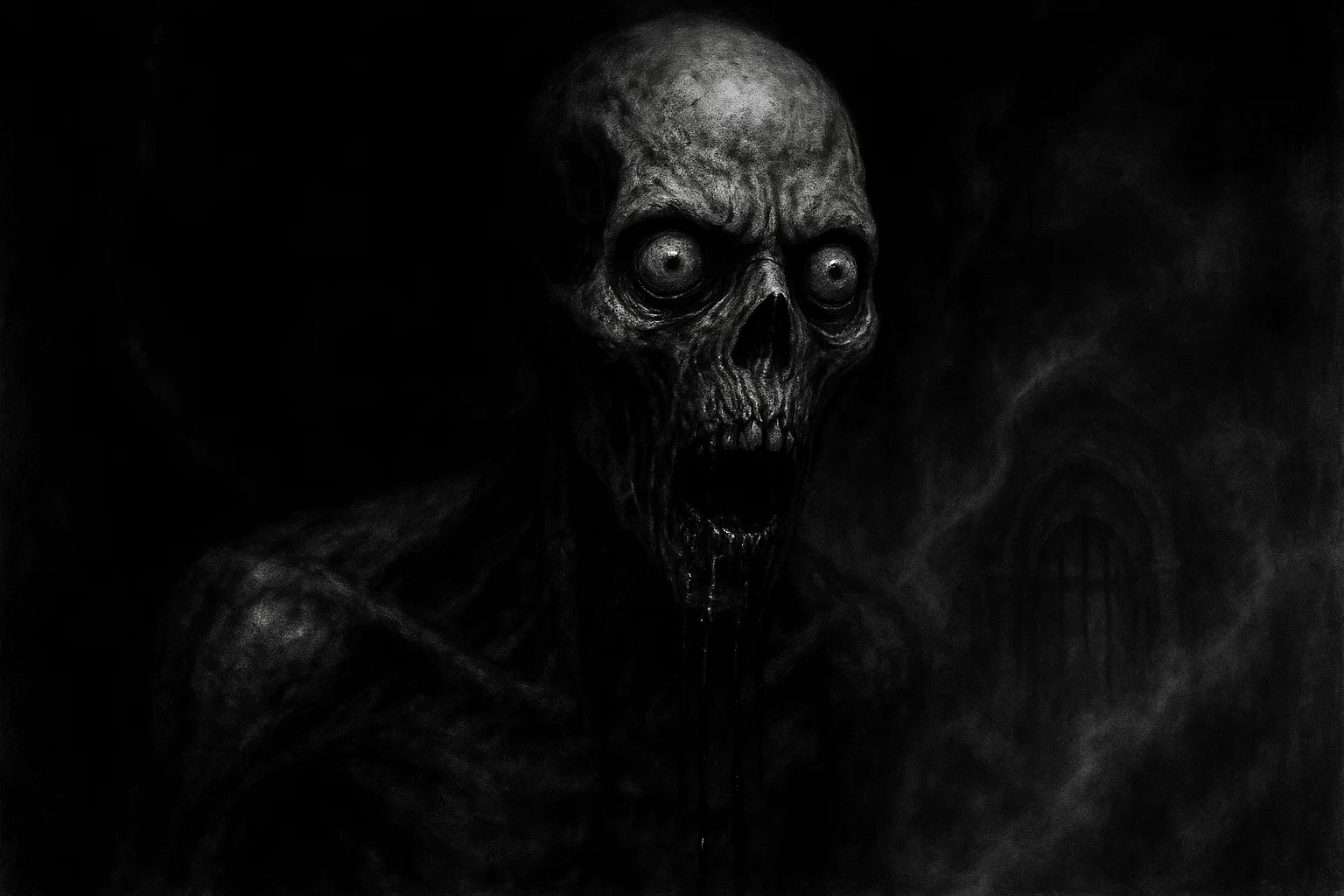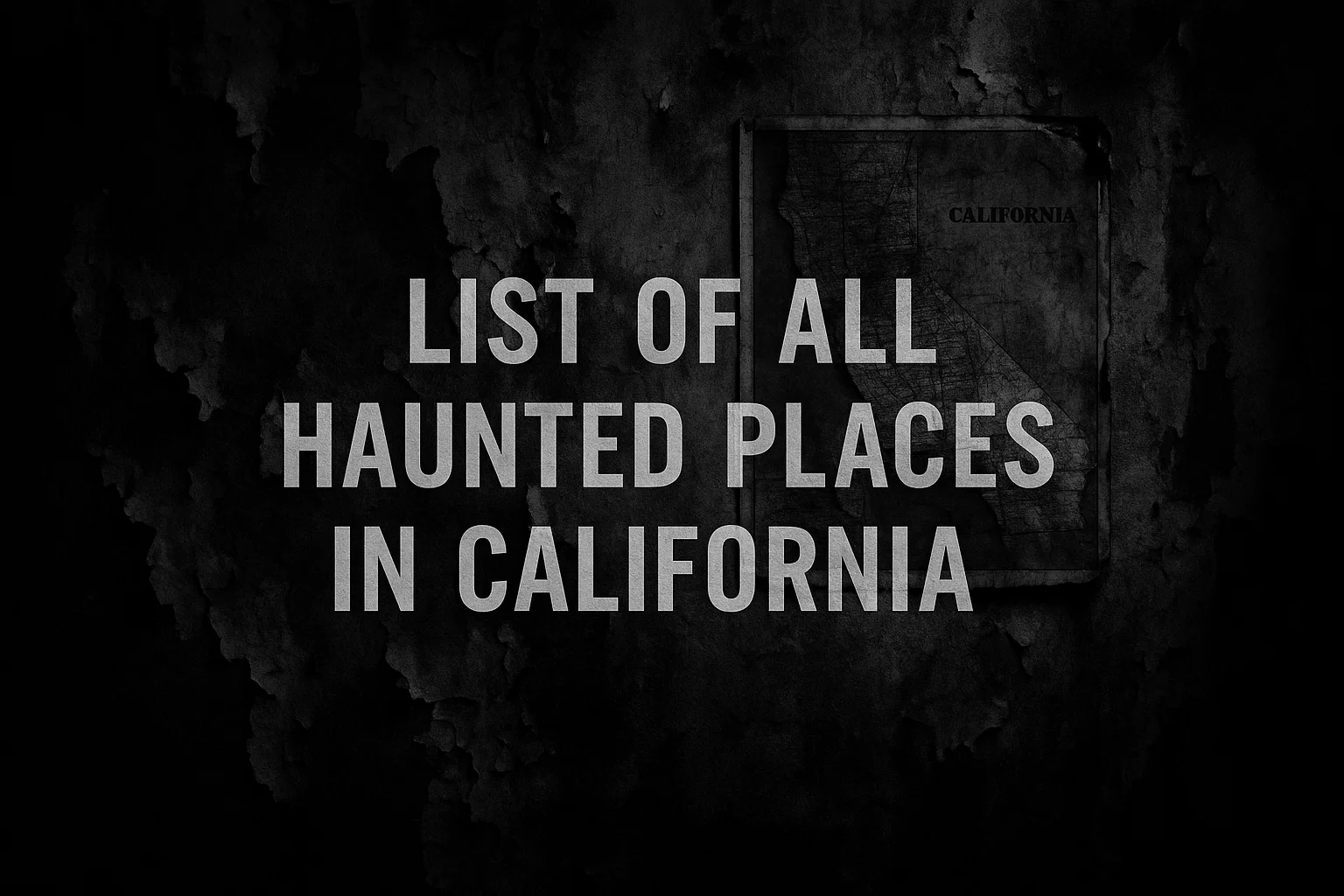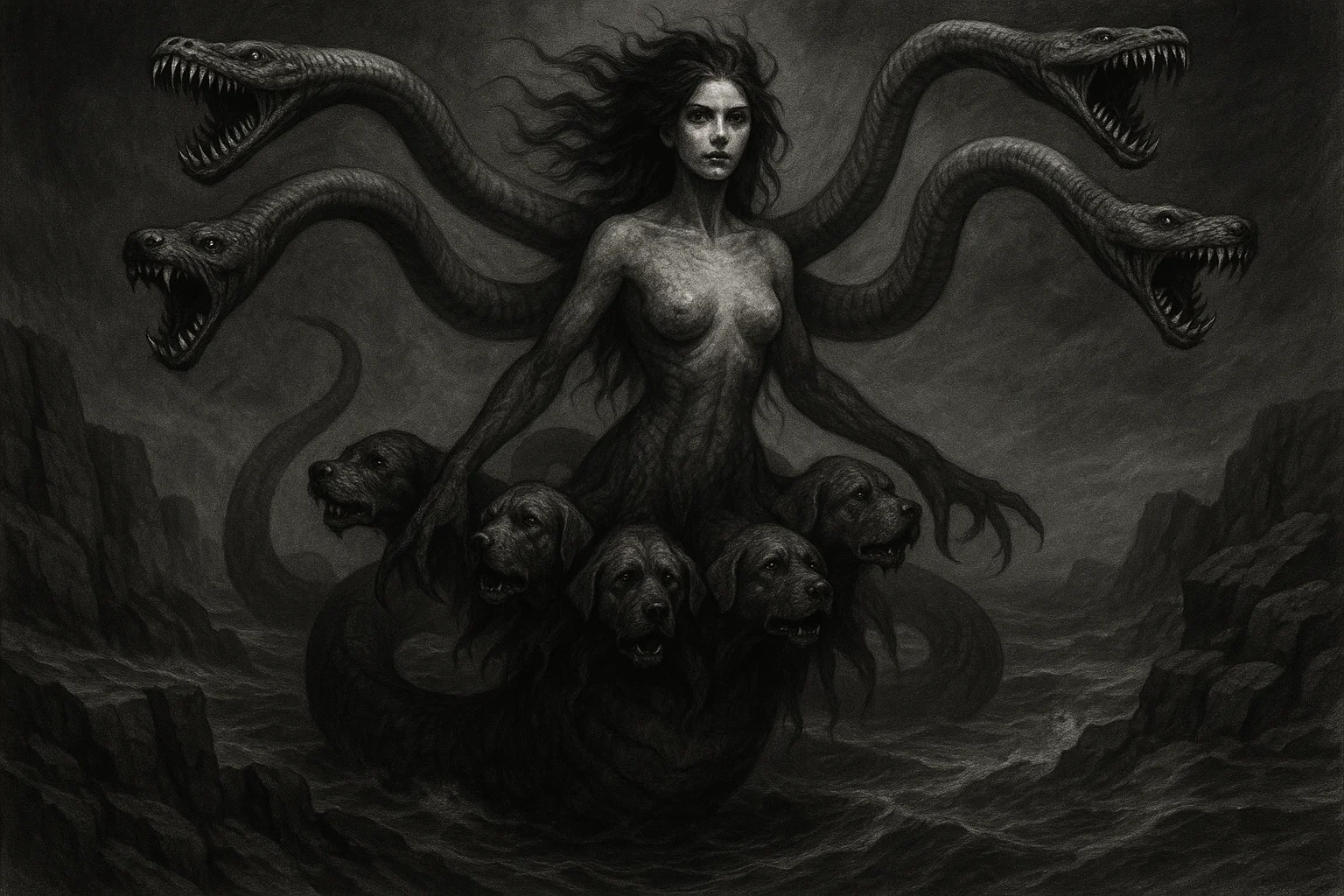In the fetid depths of ancient Mesopotamian shadows, where the air hangs heavy with the stench of inevitable ruin, Namtar lurks as the merciless demon of fate and plague, a spectral enforcer whose very name chills the blood of scribes and kings alike.
Imagine a force that doesn’t merely kill but orchestrates the slow, festering unraveling of life itself—whispering curses into the wind that bloom into epidemics, claiming heroes and hordes with impartial cruelty.
What hidden pacts did ancient priests forge to stave off Namtar‘s venomous gaze? How does this underworld vizier weave his threads of destiny through the fabric of mortality, turning ambition into agony and defiance into dust?
Summary
Key Information
| Attribute | Details |
|---|---|
| Name | Namtar (Sumerian: 𒉆𒋻 nam-tar); Namtaru, Namtara (Akkadian); equated with Irra in Babylonian plague aspects |
| Title | Sukkal of Ereshkigal; Herald of Death; Demon of Destiny; Bringer of Plagues; Vizier of Kur; Fate’s Executioner; Minister of Anu in some texts |
| Gender | Male |
| Role | Minor demon-god of the underworld; Disease demon inflicting epidemics and personal afflictions; Personification of unavoidable fate and mortality; Interrealm messenger delivering doom; Binder of other evils in exorcisms |
| Hierarchy | Mid-tier chthonic functionary in Mesopotamian pantheon; Among the Seven Gods of the Netherworld; Subordinate to Ereshkigal and Nergal; Oversees disease spirits in Irkalla |
| Servitors | Sixty disease demons targeting specific body parts (e.g., eye afflictors, heart tormentors); Galla demons for soul-dragging; Minor udug and asag spirits; Lamashtu-like child-harmers in plague swarms |
| Superior Demon | Ereshkigal (queenly overlord); Nergal (plague co-ruler and occasional commander); Enlil (paternal sender of calamities in epics) |
| Powers | Targeted plague infliction via demon hordes; Precognition of death omens; Interdimensional traversal through seven gates; Venomous cursing from a toxin-dripping maw; Imprisonment of rival evils; Fate manipulation to accelerate decay |
| Appearance | Ethereal, handless specter gliding without feet; Pallid, decaying flesh over skeletal frame; Bulging eyes of judgmental void; Twisted, claw-tipped stumps; Sword of obsidian for soul-reaping; Shrouded in ashen veils reeking of rot |
| Etymology | Sumerian nam-tar (“fate’s portion”); Akkadian namtaru (“destiny demon”); Linked to plague as inexorable decree |
| Associated Figures | Ereshkigal (mistress); Nergal (ally/rival); Enlil (fatherly instigator); Asag (disease cohort); Neti (gatekeeper peer); Ishtar/Inanna (afflicted foe); Atrahasis (evader); Gilgamesh (victim); Mot (Ugaritic parallel); Pazuzu (counter-demon) |
| Weaknesses | Ritual embarrassment via excessive offerings; Exorcisms invoking Ninisina or Asalluhi; Fumigations with juniper/myrtle; Proxy figurines for binding; Appeals to Ea/Enki‘s cunning |
| Opposing Angel/Saint | Ninisina (healing goddess); Asalluhi (purifier); Ea/Enki (wise thwart-er); Pazuzu (apotropaic wind demon) |
| Equipment/Tools | Death sword for visceral omens; Venomous breath as curse-weapon; Invisible fate-chains; Clay tablets for decrees; Banquet proxies in rituals |
| Pantheon | Mesopotamian (Sumerian-Akkadian-Babylonian-Assyrian); Chthonic Anunnaki subgroup; Parallels in Ugaritic/Canaanite death cults |
Etymology
The name Namtar, etched into the cuneiform lexicon of ancient Sumer, unravels as nam-tar, a compound that starkly captures the demon’s essence: nam denoting “fate” or “destiny” in its cosmic, unyielding form, while tar evokes an “allotted portion” or “decreed share,” implying life’s span measured out like rations in a divine granary.
This etymological core, first attested in Early Dynastic texts around 2500 BCE, transforms abstract inevitability into a personified terror, with the dingir determinative (𒀭) prefixing the sign to elevate it from philosophical musing to a demonic entity worthy of dread incantations.
In the god lists of An = Anum, compiled during the Kassite period (c. 1600–1155 BCE), Namtar appears as dNam-tar, the divine marker underscoring his liminal status—neither fully god nor mere sprite, but a fate demon bridging the Anunnaki hierarchy.
Transitioning to Akkadian tongues by the Old Babylonian era (c. 2000–1600 BCE), the name morphs to nam-ta-ru or Namtaru, retaining its Sumerian spine while infusing Semitic nuances of plague as destiny’s foul executor. Here, Namtar aligns with Irra, the Babylonian plague god, suggesting syncretic layers where fate’s decree manifests as bodily betrayal—fevers as the portion doled to the unworthy.
Lexical series like HAR-ra = hubullu equate namtar with terms for “doom” and “epidemic,” revealing how scribes weaponized the word in medical-ritual texts, such as the SA.GIG compendium, to diagnose afflictions as demonic allotments. This evolution mirrors broader Mesopotamian worldview shifts: from Sumerian fatalism, where me (divine powers) included death’s script, to Akkadian demonology, emphasizing Namtar‘s agency in twisting those powers toward suffering.
Deeper philological roots trace nam to proto-Euphratean substrates, possibly echoing pre-Sumerian concepts of cosmic ledgers, akin to Hurrian namme for “portion” in Mitanni treaties (c. 1500 BCE). In Ugaritic parallels, Namtar‘s echo in mt (Mot, death personified) hints at Northwest Semitic borrowings, where fate’s “portion” becomes devouring hunger.
Personal names from Ur III archives (c. 2100–2000 BCE), like Lugal-namtar (“King of Fate”), devoid of the divine marker, suggest early cultural seepage—Namtar as cautionary motif in nomenclature, warding against his grasp. By Neo-Assyrian times (911–609 BCE), incantatory papyri invoke namtar as a binding verb: “Let Namtar seize the foe,” perverting its etymology into a curse-tool.
This nomenclature’s potency fueled ritual dread; pronouncing nam-tar in reverse during Udug-hul exorcisms unraveled its hold, a linguistic jujitsu against the demon’s decree. Scholars like Thorkild Jacobsen note how Namtar‘s name embodies Mesopotamian bureaucracy’s horror—fate not as wild storm, but as tabulated verdict from Kur’s clerks. In bilingual dictionaries, such as Malku = Šarru, namtaru glosses “pestilence portion,” linking it to agricultural omens where poor yields foretold his visitations.
Thus, Namtar‘s etymology isn’t mere wordplay; it’s a portal to the Sumerian demonology‘s core terror, where naming doom invites its shadow, compelling mortals to etch countermeasures on trembling tablets.
You May Also Like: What Is an Edimmu? The Ancient Demon of the Unburied Dead
What Does the Demon Namtar Look Like?
The demon Namtar materializes as a nightmarish void incarnate, a humanoid wraith whose form defies the solidity of flesh, gliding through the seven-gated gloom of Irkalla like a blight on the wind.
Devoid of hands or feet—as lamented in the Death of Gilgamesh—he propels himself on stumps twisted into claw-like barbs, scraping against the underworld’s dust to evoke the rasp of bones on stone. His skin, a mottled pallor of decayed ivory veined with greenish ichor, clings taut over a skeletal chassis riddled with fissures that ooze the fetid promise of plague, while bulging eyes—milky orbs flecked with hellish red—bore into victims with the cold calculus of a soul-weigher.
Adorned in ragged shrouds woven from the tattered veils of the unburied dead, Namtar wields an obsidian sword etched with cuneiform curses, its blade humming with the silenced screams of past conquests, as glimpsed in the Underworld Vision of an Assyrian Prince. His maw gapes unnaturally wide, lined with fangs dripping venom that sizzles on contact, exhaling breaths that curdle air into miasmic fog.
No crown or scepter graces this plague bringer; his regalia is absence itself—a formless terror that amplifies the void, ensuring that in torchlight or dream, Namtar‘s silhouette lingers as the ultimate anonymity of annihilation.
Historical and Mythological Background
Namtar‘s origins slither from the primordial silt of third-millennium BCE Sumer, emerging around 2500 BCE in proto-cuneiform incantations from Fara and Abu Salabikh as a nascent fate demon, personifying the inexorable me of mortality amid the Anunnaki‘s cosmic order.
Born perhaps as Enlil’s shadowy progeny—paired with Asherah in fringe Ugaritic-Mesopotamian syncretisms—he crystallized during the Uruk period (c. 4000–3100 BCE) as Kur‘s bureaucratic scourge, his role expanding in Akkadian conquests to embody plague as divine retribution.
This Sumerian demon of death bridges pantheons: akin to Egyptian Sutekh‘s chaotic plagues or Greek Thanatos‘s silent reap, yet uniquely Mesopotamian in his ledger-bound malice, influencing Canaanite Mot‘s devouring maw and even Indo-European Ner- roots for underworld lords. Far from benevolent, Namtar‘s genesis reflects a worldview of vigilant terror—mortals etching apotropaia against his creep, as in Shuruppak’s omen tablets foretelling his visitations as dust storms laced with doom.
The Banquet of Insult
In the Standard Babylonian recension of Nergal and Ereshkigal (c. 1500 BCE, preserved in Nineveh’s libraries), the myth ignites at a heavenly banquet hosted by Anu, where gods quaff ambrosial ale amid ziggurat spires piercing the firmament.
Ereshkigal, gravid and earthbound in Irkalla, dispatches her vizier Namtar—cloaked in underworld dust—to claim her portion, a ritual nod to cosmic equity. The assembly rises in obeisance, but Nergal, the scorching war god of Cutha with his Sebitti horde, lounges defiant, scorning the plague demon‘s pallid form and venomous aura as beneath notice.
Enraged, Ereshkigal—her throne a slab of lapis amid wailing shades—commands Namtar to ascend the “long stairway of heaven” and issue an ultimatum: deliver Nergal to Kur or unleash the teeming dead upon earth’s teeming cities, their shades blotting the sun like locusts.
Namtar, ever the dutiful harbinger, relays the decree with whispers that curdle mead into bile, his handless stumps gesturing fates unspoken. Nergal, goaded by pride and Ea’s sly counsel, descends through Neti‘s seven gates, stationing fourteen demons—fanged sentinels of fang and claw—at each threshold to strip intruders bare.
At Ganzir’s palace, Namtar confronts the intruder, his sword flashing in torch-gloom, but Nergal‘s fury erupts: he seizes the vizier by throat, drags him before Ereshkigal‘s veiled form, and beheads him in a spray of ichor that stains the throne room’s obsidian floors.
The queen, veiled in shadow, weeps not for her servant but lusts for the conqueror, offering him half her realm in a union forged in violence—Nergal as co-ruler, Namtar revived by Ea’s sorcery to resume his grim duties.
Amarna variants (c. 1350 BCE) twist the tale: Nergal slays Ereshkigal briefly, only for resurrection to bind their fates, underscoring Namtar‘s role as catalyst for chthonic upheaval.
This epic, recited in equinoctial rites, warns of hubris’s cost: even demons like Namtar serve as pawns in the gods’ venomous games, their insults rippling into underworld realignments that echo in Assyrian annals of plague-wars.
You May Also Like: Botis in Demonology: From Serpent to Hell’s Noble
Ishtar‘s Descent to the Underworld
The Akkadian Descent of Ishtar (c. 1700 BCE, on tablets from Nippur), evolving the Sumerian Inanna’s Descent, plunges the love-war goddess into Kur‘s abyss, her ambition a spark for Namtar‘s sadistic artistry. Adorned in lapis beads and hematite crown—symbols of her dominion—Ishtar storms the flat-earth’s underbelly, driven by whispers of Ereshkigal‘s envy or a bid to seize the dead’s throngs for her heavenly court.
Neti, the chief gatekeeper with keys forged in nether-flame, bars her path at the first of seven gates, each stripping an emblem: crown at the first, veils at the second, down to her nakedness at the seventh, exposing vulnerability to Kur‘s dust-choked winds.
In the throne room, amid shades gnashing in eternal hunger, Ereshkigal—swollen with rage or phantom pregnancy—convulses at her sister’s intrusion, her cries birthing omens of famine.
She bids Namtar, her spectral sukkal lurking in gloom, to assail the intruder: “Strike her from head to toe!” The plague demon unleashes his sixtyfold legion—five demons each clawing the head (migraines that split skulls like clay), feet (lameness chaining steps), sides (gout twisting ribs), eyes (cataracts veiling sight), and heart (palpitations drowning breath in fluid torment). Ishtar crumples, her divine fire guttering to a corpse-pile, hung like meat on hooks amid the wails.
Yet Ea, the sly Abzu-lord, crafts emissaries from river-clay—beings of neither sex, immune to Kur‘s judgments—to beg revival with flattery: “Pour the waters of life upon her!” Ereshkigal, begrudgingly moved, relents; Namtar escorts the gasping goddess upward, but not without decree: she must substitute another.
Ishtar seizes Dumuzi/Tammuz, her shepherd-consort lounging amid lilies while she suffered, dragging him to Kur in chains clutched by galla demons. Sumerian precursors omit Namtar, attributing death to collective verdict, but Akkadian innovation amplifies his malice—plagues as personalized torments, ritually reenacted in Akitu festivals to avert seasonal descents. This myth, blending fertility cycles with sibling rivalry, casts Namtar as fate’s scalpel, carving even immortals to remind that Sumerian demonology spares no ambition.
The Atrahasis Epic
The Old Babylonian Atrahasis (c. 1800 BCE, on Sippar tablets), a prelude to flood sagas, unleashes Namtar as Enlil’s cudgel against humanity’s “noise”—the clamor of teeming cities like Eridu grinding the high gods’ repose.
Freshly molded from Nintu’s clay and We-ilu’s blood—hybrids to till fields and sing hymns—mortals multiply unchecked, their cries a din drowning celestial slumbers. Enlil, storm-lord of Nippur, convenes the pantheon in Ekur’s vaulted halls, decreeing silence through subtlety: “Let Namtar diminish their racket!”
The fate demon, summoned from Kur‘s ledgers, ascends on venomous winds, loosing plagues that ravage Sumer’s canals and granaries: headaches felled scribes mid-cuneiform, šuruppu-fever melted warriors’ sinews, ašakku-seizures twisted limbs like reeds in gale.
Cities emptied to ghost-towns, altars cold, until Atrahasis—Shuruppak’s “exceedingly wise” priest—consults Enki/Ea in Abzu’s watery gloom. The trickster god whispers: Divert all worship to Namtar—flood temples with barley, beer, and incense, anoint his effigies with oil till they gleam.
Mortals obey, their offerings piling like ziggurats before Namtar‘s proxies, stirring unease in the demon’s core: unaccustomed adulation pricks his bureaucratic hide, embarrassment halting his hand mid-curse. Plagues ebb, but Enlil escalates—droughts, then the deluge—yet Namtar‘s interlude humanizes the inexorable, a tactical retreat in his arsenal of attrition.
Sumerian antecedents in Enki and the World Order hint at earlier roles, where Namtar feasts at creation banquets, portending his dual face: invited guest turned grim reaper. Performed in New Year rites, this epic etiologizes suffering as cosmic complaint, with Namtar as the silent amplifier, his diseases a prelude to greater cataclysms that shaped Babylonian flood-lore.
You May Also Like: Who Is Dagon? The Demon That Rose from Ancient Seas
Death of Gilgamesh and Death of Ur-Namma
The Sumerian Death of Gilgamesh (c. 2100 BCE, Ur III Nippur fragments) mourns Uruk’s lion-king, felled not by cedar quests or Humbaba’s roar, but Namtar‘s subtle snare—the demon’s door-bolt clamping his vigor like a trap on a gazelle.
Post-Utnapishtim’s immortality tease, Gilgamesh returns triumphant yet hollow, only for fate’s portion to strike: “Inhuman Namtar is heavy upon him, Namtar that has neither hand nor foot, who drinks no water, eats no grain.” Bedridden in Ekur’s shadow, he laments—unable to rise, eat, or sip—while kin weigh offerings: gold to Ereshkigal, silver to Nergal, lapis to Namtar as toll for Kur‘s ferry.
Courtiers parade treasures—oxen, lambs, carnelian jars—before the hero’s bier, entreating the plague demon for safe passage amid Anunnaki judges. No malice, yet no mercy: Namtar claims the epic slayer, his handless grasp a metaphor for destiny’s impersonality, ensuring even demigods dustify.
Paralleling Death of Ur-Namma (c. 2100 BCE), where Sumer’s founder-king succumbs similarly—”Held fast by the door-bolt of Namtar“—offerings flow: weapons to Ninazu, jewels to Dumuzi, Namtar‘s share a grim lubricant for the descent.
These laments, chanted at royal pyres, blend grief with bureaucracy, portraying Namtar as mortality’s clerk—tribute demanded, passage granted, but the void eternal. In Gilgamesh’s case, echoes to Standard Epic’s Tablet XII suggest netherworld dialogues, where the dead warn of Namtar‘s unyielding audits.
Enki and Ninmah and Exorcistic Echoes
In Enki and Ninmah (c. 1800 BCE), Namtar lurks at creation’s feast, invited among gods to toast mankind’s molding from Abzu’s clay—a ironic prelude to his role as their undoer. As Nintu botches flawed births—lame, blind—Enki redeems them with roles, but Namtar‘s shadow implies fate’s veto: even crafted life bears his portion of woe.
Exorcistic series like Udug-hul (c. 2000–1000 BCE) pair him with Asag in headache hexes, yet invoke him to chain rivals like Mimma Lemnu, the “Evil Whatever,” into Kur‘s pits—a demonic janitor mopping up greater threats.
These vignettes cement Namtar‘s antiquity, his threads weaving from genesis to grave in Mesopotamian mythology‘s dread tapestry.
Historical Mentions
| Text/Grimoire | Year (Approximate) | Excerpt |
|---|---|---|
| Atrahasis Epic | c. 1800 BCE | “Namtar put an end to their noise straight away. Sickness: headache, šuruppu, ašakku, Blew into them like a storm. The thoughtful man, Atrahasis… Kept his mouth shut.” |
| Descent of Ishtar to the Underworld | c. 1700 BCE | “Namtar… curses Ishtar with 60 diseases, naming 5 of the head, feet, side, eyes, and heart, after she arrives in the underworld.” |
| Nergal and Ereshkigal (Standard Version) | c. 1500 BCE | “Namtar, go up the long stairway of heaven. Take from the table… the gods rose up before Namtar, save Nergal, who did not rise.” |
| Death of Gilgamesh | c. 2100 BCE | “Inhuman Namtar is heavy upon him, Namtar that has neither hand nor foot… To Namtar, who is fate, they weighed out the offering.” |
| Death of Ur-Namma | c. 2100 BCE | “Held fast by the door-bolt of Namtar, he is unable to rise. Like a fish… he… ill. Like a gazelle caught in a trap… Namtar with no hands or feet.” |
| Udug-hul Incantation Series | c. 2000–1000 BCE | “May the evil udug… stand aside… An incantation against Mimma Lemnu… entrusts him with keeping this being imprisoned in the underworld.” |
| Underworld Vision of an Assyrian Prince | c. 700 BCE | “I saw Namtar, the vizier of the underworld, who fashions the visceral omens; a man stood before him… wielded a dagger in his right.” |
| Enki and Ninmah | c. 1800 BCE | “Namtar was… one of the gods invited to a banquet celebrating the creation of mankind.” |
| SA.GIG (Medical Omens) | c. 1000 BCE | “If a man’s… is seized by Namtar, his days are numbered; apply the incantation of the wise Ea.” |
| An = Anum God List | c. 1300 BCE | dNam-tar: vizier of the queen of the underworld, bearer of fates and diseases. |
You May Also Like: Is the Michigan Dogman Real? Bone-Chilling Sightings and Legends
Namtar’s Powers and Abilities
As a quintessential Sumerian plague demon, Namtar‘s arsenal transcends generic infernal tricks, honing on the insidious erosion of vitality through fate’s poisoned quill—powers that corrupt by amplifying human frailties into fatal spirals.
His sixty disease demons, spectral shards targeting orifices and organs, infiltrate like spies in the blood, whispering despair that tempts victims to isolation: a fevered merchant hoards grain, breeding famine-fueled riots, or a warrior’s heart-pain festers into vengeful betrayal.
Unlike chaotic fiends, Namtar wields precognitive ledgers, foreseeing death-omens in bird-flight or liver-portents, using visions to lure the doomed into reckless gambles—promising longevity for a soul’s pawn, only to claim it swifter.
Venomous cursing from his ichor-lined maw exhales epidemics, a breath that warps communal bonds: villages turn on “cursed” kin, igniting witch-hunts that swell Namtar‘s harvest.
Interdimensional traversal breaches Kur‘s gates sans hindrance, escorting shades or smuggling plagues surfaceward, tempting hubristic summoners with forbidden knowledge that rots their minds. In binding rites, he imprisons rivals like Lamashtu in abyssal chains, corrupting by proxy—trapped demons bargain through mediums, ensnaring pacts that doom lineages.
In modern occult revivals, Namtar‘s powers mutate: in Shin Megami Tensei series (1987–present), he manifests as a summonable Yoma demon, hurling Mabufu ice-plagues and Fate Bind curses that seal foes’ actions, echoing ancient torments in pixelated battles.
White Wolf’s World of Darkness RPG casts him as a Baali clan’s patron, granting Cloak of Shadows to veil vampires in plague-mist and Sense Doom for predatory ambushes, tempting players toward apocalyptic bloodlines. These adaptations amplify his corruption: digital Namtar tempts gamers with power-ups that “fate-lock” victories, mirroring how his ancient breaths turned piety to paranoia.
| Power/Ability | Description | Source | How It Tempts/Corrupts Humans |
|---|---|---|---|
| Disease Infliction | Deploys sixty specialized demons for organ-specific plagues (e.g., ocular blindness, cardiac suffocation); scales to city-wide epidemics. | Ishtar’s Descent; Udug-hul | Fosters isolation and scapegoating, eroding trust into communal collapse or sacrificial frenzy. |
| Fate Precognition | Divines death-timings via omens; announces dooms to accelerate panic. | Death of Gilgamesh | Instigates fatalism or desperate pacts, corrupting resolve into self-sabotage. |
| Venomous Cursing | Exhales toxin-mists birthing fevers and rot; verbal decrees fester wounds. | Underworld Vision | Spreads paranoia, tempting accusations that fracture families into vengeful feuds. |
| Interdimensional Traversal | Slips through realms/gates; escorts or invades without trace. | Nergal and Ereshkigal | Lures with forbidden glimpses, corrupting curiosity into soul-binding descents. |
| Evil Imprisonment | Chains demons/spirits in Kur; enforces verdicts on trapped souls. | Udug-hul | Proxies bargain from bonds, tempting intermediary deals that doom summoners’ bloodlines. |
| Modern Plague Simulation (Pop Culture) | Ice/fate curses in games; shadow-veils in RPGs for stealthy decay. | Shin Megami Tensei; White Wolf RPG | Gamifies despair, tempting endless grinds that mirror addictive fatalism. |
How to Counter Namtar’s Powers
Thwarting Namtar demanded Mesopotamian ritualists’ arsenal of cunning and contagion-reversal, transforming his fate-webs into knotted failures through layered defenses that mocked his personality.
Core to countermeasures: the āšipu‘s exorcisms from Udug-hul, where juniper smoke and myrtle brews fumigate lairs, invoking Ninisina‘s salves—herbal pastes of tamarisk and cedar—to expel disease demons like vermin from burrows, performed at equinox dawns when Kur‘s grip slackens.
Offerings weaponized Namtar‘s ego, as in Atrahasis: deluge his shrines with overabundant barley, oil, and incantations till embarrassment stalls his curses, a psychological feint turning tribute into torment for the tempter. Amulets of Pazuzu—the snarling wind-fiend—ward traversals, their clay plaques hung at thresholds to whirl plagues back to sender, while Asalluhi‘s baths in cedar-infused waters dissolve venom, restoring flesh and frayed alliances.
Advanced bindings consigned minions via Girra‘s pyres—effigies torched with name-inscriptions, consigning Namtar‘s shards to abyssal forges. Ea‘s proxies, molded from river-mud, absorbed decrees in substitution rites, unraveling interdimensional snares. These arts, archived in Assurbanipal’s vaults, affirmed defiance: Namtar‘s malice bent by persistent craft, his ledgers smudged by human ink.
You May Also Like: 10 Short Horror Stories You Should Never Read Alone
Namtar’s Role in the Hierarchy of Hell
In Mesopotamian underworld‘s stratified abyss—Irkalla‘s seven-tiered dust-vaults beneath the earth’s flat keel—Namtar perches as Ereshkigal‘s indispensable sukkal, a mid-echelon enforcer whose vizierial quill scripts doom from the queen’s lapis throne in Arali’s gloom.
Cataloged in An = Anum as dNam-tar, he rules the Fate Annex, a bureaucratic warren amid Kur‘s second layer, overseeing ledgers that tally souls’ portions amid wailing eddies. Below the Seven Judges—Ereshkigal, Nergal, Dumuzi, Gishzida, Ninazu, Ningishzida, and himself—he commands no full domain but patrols boundaries, his armies the sixty disease spirits swarming like locusts from third-tier plague-pits.
Subordinates bow: Asag headaches under his banner, galla chains drag quarry, rabisu ambushers lurk in his shadow—legions drilled in silent incursions, their loyalty forged in Nergal‘s forge-fires.
Superiors loom: Ereshkigal‘s decrees he scribes without question, Nergal‘s Sebitti warriors outrank his plagues in martial eddies, while Enlil dispatches him as paternal hatchet-man. Allies cluster chthonic: Neti shares gate-vigils, Ninazu serpents coil with his venom; adversaries glare from light—Ninisina‘s healers sabotage his swarms, Ishtar‘s revivals mock his claims, Pazuzu‘s winds scatter his mists.
In fluid hierarchies—southern Sumer exalting Nergal‘s overlap, Assyrian texts elevating Namtar to Irra’s echo—he stabilizes Kur‘s feuds, his impartiality a cold cog in the machine. No throne, but influence vast: from Kur‘s core, he threads fates surfaceward, a demon-clerk whose audits ensure the pantheon’s dread equilibrium.
Astrological Associations and Symbolism
Namtar‘s celestial shadow drapes over Saturn’s leaden orbit—the malefic taskmaster of boundaries and decay—its rings evoking fate’s unyielding bands, portending plagues in Enūma Anu Enlil omens where Saturn-Mars clashes herald epidemics sweeping Tigris bends.
As chthonic earth-bound, he claims the element’s shadowed loam, his plagues rooting in soil’s rot, while water’s stagnant pools mirror his venomous flow—stagnant marshes birthing miasmas under his sign. Scorpio’s sting resonates zodiacally, its transformative sting a venom-kiss paralleling Namtar‘s curses, with number sixty (disease horde) ticking in Babylonian sexagesimal cycles of doom.
Colors bleed ashen gray for Kur‘s dust-shrouds and venom-green for ichor-veins, metals lead his binding chains—Saturn’s alloy, cold and heavy—while iron forges his reaper-blade. Crystals amplify: onyx imprisons fates in glossy voids, hematite ebbs blood’s tide, obsidian mirrors his sword’s edge.
Absent dedicated days, equinoctial twilights creak his gates, metals like tin (allied to Nabu’s ledgers) invoke his scribe-role, stones such as malachite counter his green plagues with verdant wards.
| Astrological Element | Association/Meaning | Details |
|---|---|---|
| Planet | Saturn (fate-restriction); Mars (plague-fury); Pluto (modern underworld echo) | Saturn’s slowness mirrors decreed spans; Mars ignites epidemic wars; Pluto veils hidden decays. |
| Element | Earth (chthonic dust); Water (venom-stagnation) | Earth’s loam breeds his swarms; water’s pools ferment curses into floods. |
| Number | 60 (demon legion); 7 (gates/judges) | Sixty afflictions tally body-parts; seven layers his hierarchical haunt. |
| Day | Equinox dusks; Saturn’s Saturday (inferred) | Twilights thin veils; inferred Sabbath of doom for rituals. |
| Metal | Lead (inescapable bind); Iron (reaper-tool); Tin (ledger-alloy) | Lead weighs souls; iron slays; tin scribes decrees. |
| Precious Stone/Crystal | Onyx (fate-prison); Hematite (blood-ebb); Malachite (plague-ward); Obsidian (omen-mirror) | Onyx seals evils; hematite stems flows; malachite greens against venom; obsidian reflects visions. |
| Color | Ashen gray (decay-shroud); Venom-green (ichor); Obsidian-black (void-sword) | Gray cloaks specters; green taints breaths; black devours light. |
| Zodiac | Scorpio (sting-transformation); Capricorn (Saturn-rule) | Scorpio’s tail his curse; Capricorn’s ambition his snare. |
You May Also Like: Rusalka: The Haunting Water Spirit That Lures Victims to Their Death
Namtar’s Sigil
Canonical sigils elude Namtar‘s grasp in lost cuneiforms, yet reconstructed from omen-seals: a serpent coiling ’round an upthrust sword, cleft by dingir-star, symbolizing venom encircling fate’s blade through divine malice. Traced in hematite during lunar wanes, it binds plagues or summons whispers, risking his glide if misinvoked—per Udug-hul, etched on thresholds to repel his stumps.
| Symbol/Item | Association/Meaning | Use in Rituals |
|---|---|---|
| Sword | Doom’s edge; soul-slaying verdict | Etched in ash for binding; offered as proxy-toll. |
| Serpent | Coiled venom; fate’s insidious twist | Effigies coiled and crushed to dispel curses. |
| Onyx | Void-prison; underworld seal | Inscribed amulets for traversal-wards. |
| Juniper Incense | Smoke-veil against plagues | Burned in circles to fumigate demon-hordes. |
| Clay Tablet | Decree-ledger; binding contract | Names scratched for imprisonment hexes. |
| Black Feather | Dust-flight; avian death-omen | Scattered to divert escorts from the living. |
| Myrtle | Herb-foil to venom; purification leaf | Woven crowns for Asalluhi’s cleansing. |
| Lead Ingot | Fate-weight; Saturn-bind | Buried with effigies to sink minions. |
Comparison with Other Demons
| Demon | Origin/Pantheon | Role/Domain | Corruption |
|---|---|---|---|
| Nergal | Mesopotamian | Plague-war king of Kur | Both unleash epidemics, but Nergal tempts through conquest-rage; allied in co-rule. |
| Ereshkigal | Mesopotamian | Irkalla‘s iron queen | Fate-enforcers; she corrupts via isolation, he via bodily betrayal—mistress-minion bond. |
| Pazuzu | Mesopotamian | Wind-fiend plague-repeller | Plague-weavers; Pazuzu tempts protection-pacts that backfire into winds of woe. |
| Lamashtu | Mesopotamian | Fetus-devourer nightmare | Child-doomers; she corrupts maternities with terror, he with inherited fates. |
| Asag | Mesopotamian | Headache/fever minion | Disease-duo; tempts migraines into madness-pacts, mirroring his organ-assaults. |
| Gallu | Mesopotamian | Chain-dragger soul-thief | Nether-haulers; corrupts through raw fear, he via predestined dread—his frequent aides. |
| Mot | Ugaritic | Sterile death-devourer | Inexorable enders; tempts drought-despair, paralleling his epidemic voids. |
| Lilith | Mesopotamian/Jewish | Night-strangler seductress | Infant-plague bringers; she corrupts via erotic illusions, he via fatal allotments. |
| Rabisu | Mesopotamian | Lurking skin-scourger | Hidden afflictors; tempts paranoia-traps, akin to his omen-ambushes. |
| Edimmu | Mesopotamian | Vengeful wind-waster | Invisible corruptors; blows tempests of regret, echoing his mist-breaths. |
| Irra | Babylonian | Fire-plague destroyer | Epidemic-kin; tempts vengeful fires, blended in his Babylonian echo. |
| Thanatos | Greek | Personified death-slumber | Doom-weavers; corrupts via peaceful illusion, contrasting his tormenting vigils. |
You May Also Like: Do Residual Hauntings Fade Over Time?
Conclusion
Namtar, the unrelenting Sumerian demon of fate, stands as a grim sentinel in humanity’s ancient dread-archive, his venomous edicts a reminder that mortality’s script spares neither throne nor hovel.
From cuneiform pleas etched in terror to epic laments of fallen titans, he incarnates the plague bringer‘s chill arithmetic—life portioned, then pilfered, in Kur‘s unlit vaults. Yet in this malevolence lies a stark truth: even fate’s scribe falters under ritual’s barrage, his hordes scattered by smoke and stone.
As echoes of Namtar‘s plagues ripple through history’s pandemics—from Black Death analogies to modern viral shadows—his legacy warns of destiny’s dual blade: observer and orchestrator, ever hungry for the next decree. Mortals, then and now, counter with cunning altars, affirming that while Namtar tallies ends, we inscribe the resistances that defy his sum.
In the end, this underworld vizier‘s tale transcends antiquity, a spectral thread in Mesopotamian demonology‘s weave—inviting not submission, but the fierce scrawl of survival against his ledger’s close.







